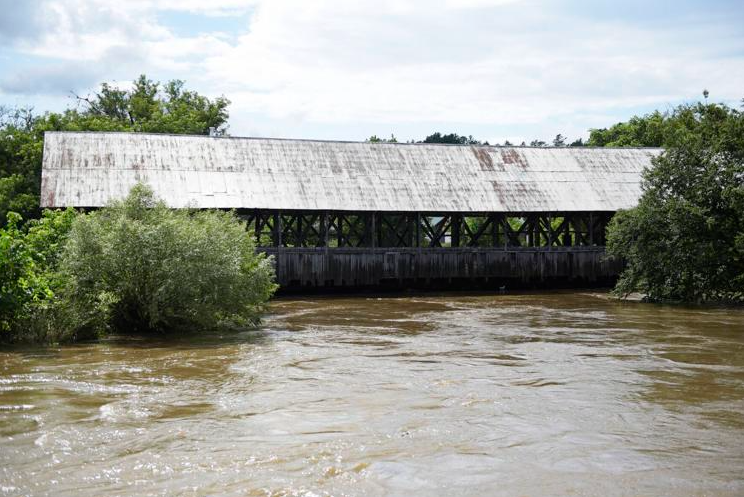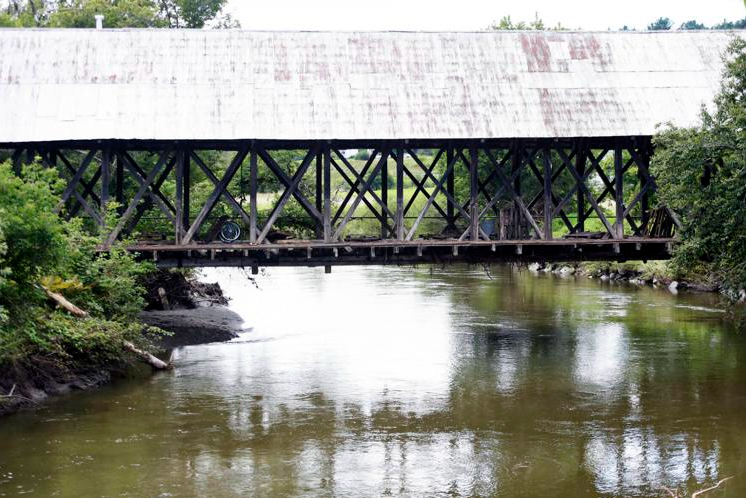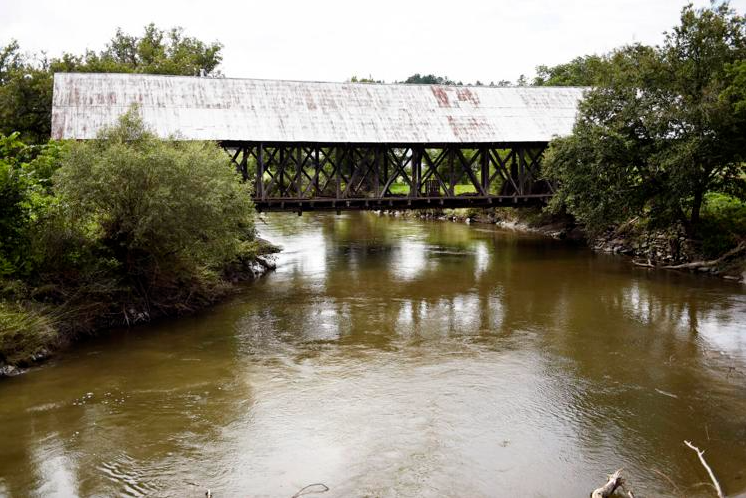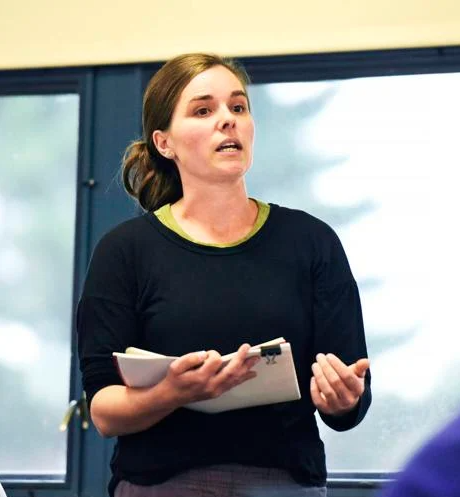
Project Manager Optimistic Bridge Will Stay Put
Paul Hayes phayes@littletonrecord.com Staff Writer Aug 27, 2024






LYNDON — The Sanborn Covered Bridge renovation project has miraculously overcome a series of challenges this summer.
Project manager Nicole Gratton chalked it up to either luck or destiny.
“This project has some good juju around it,” Gratton said. “I don’t know how to describe it another way.”
The latest challenge is flood mitigation.
Consultants SLR International of Waterbury last month recommended the permanent removal of the Sanborn Covered Bridge as the best way to reduce flood impacts at the flood-prone Route 5/114/122 intersection.
While the town’s Hazard Mitigation Committee will not pursue that option for now, they have asked the group behind the bridge project to re-engineer the design to reduce flood impacts, taking into account SLR International’s data.
As proposed, the $2.2 million, mostly grant-funded renovation project would refurbish the bridge, rebuild the abutments, and raise the bottom of the bridge from nine inches below to two feet above the 100-year flood level.
Gratton said her group has requested more data from SLR to determine the best course of action.
The goal, she said, is to find the “sweet spot” where bridge height and abutment design could best protect people and property, while still allowing the bridge to remain over the river.
Asked if the bridge would definitely be put back where it was, Gratton said “hopefully.”
“Right now, I feel confident about it being there,” she said. “I think it’s this very delicate balance of making sure that we’re doing something within that project that is helping to reduce the flood levels in a given flood event. But also recognizing that throughout our state, we have historic structures that are up against climate change. And while safety is number one, if we can make people safe but still retain some of our historic resources, I think that that’s the best way forward.”
However, she added, “I don’t want to design something that’s not helping reduce flood waters. And let’s just say there’s no way to design it over the river in that way. The project could shift to say we’re gonna put it on land. And I don’t really think relocating it is on the table, but maybe?”
In a normal year, the SLR report would have been the worst thing to happen to the bridge renovation.
It was the third major (emphasis on major) challenge the project had faced in a month.
The first challenge occurred on July 11, when a historic flood nearly claimed the 154-year-old bridge.
The force of the swollen Passumpsic River bowed the bridge, broke one of its abutments, and nearly swept it away.
“There was a question of ‘Can we even go forward?’” Gratton said, recalling how she felt at the time. “I was just like, ‘Oh my God, is it too far gone? That was the hardest part for this project this summer.”
Challenge number two came in early August.
Faced with the threat of Hurricane Debby, the group sought to remove the compromised bridge from its abutments in one piece ahead of the potentially devastating storm.
However, the price quote for the work made Gratton do a double take.
“The estimate came in so high, the project couldn’t sustain it,” she said. “It was just like, OK, then we’re done. It felt like the end.”
Enter Vermont Heavy Timber, which offered a lower price for removing the bridge in pieces.
They successfully removed portions of the bridge, added reinforcements ahead of Debby, and completed the bridge removal the following week.
“[Vermont Heavy Timber] came in with a different means and method, and it came in much, much cheaper,” Gratton said. “It was something that the project could sustain.”
Gratton, Lyndon’s former Planning Administrator, said she understands the need for flood mitigation along the downtown corridor.
However, noting that Lyndon was a flat flood plain at the bottom of a 200 square-mile watershed, she said a regional solution deserved more consideration.
“Lyndon, it’s always going to flood, it’s the geography of the place,” she said. “As we see these more intense storms, we just have to be really conscientious of looking at it from a very big scope: What’s happening up river, what’s happening downriver? It’s not just Lyndon, it’s this whole region. It all feeds in.”
For more information on the Sanborn Bridge renovation project visit https://www.lyndonvt.org/?page_id=3107
Editors note: Information reprinted with permission from the Caledonian Record Publishing Company, Inc.
